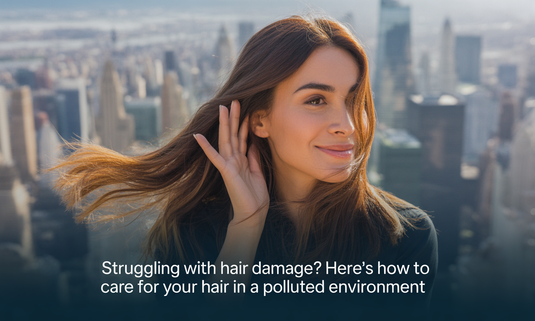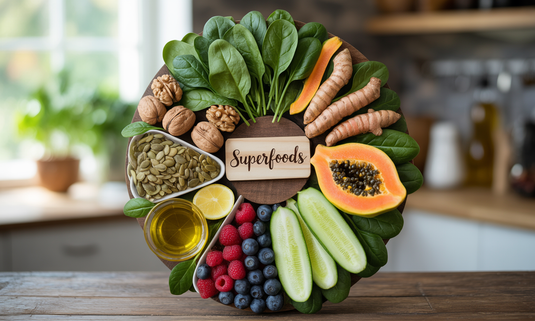
Split Ends to Silky Hair: How to Build a Hair Repair Routine at Home
Struggling with frizz, dryness, and split ends? You're not alone. Hair damage is common, but the solution doesn’t have to be expensive salon treatments. A consistent at-home routine can work wonders in bringing your hair back to life—restoring softness, strength, and shine.
This guide will show you how to create an effective hair repair routine using simple steps and ingredients easily accessible at home.
What Leads to Split Ends and Hair Damage?
Split ends form when the protective outer layer of a hair strand becomes worn or broken, causing the ends to fray. This damage weakens the entire strand and leads to dullness and rough texture.
Common causes of hair damage include:
· Frequent use of heat styling tools
· Hair coloring, bleaching, or chemical treatments
· Shampoos containing sulfates or drying ingredients
· Exposure to sun, wind, and pollution
· Over-washing or brushing wet hair roughly
· Poor nutrition or dehydration
Identifying the root cause is key to preventing further damage and creating an effective routine.
Step 1: Trim Away the Damage
Unfortunately, once a hair strand splits, the only way to truly get rid of it is by trimming. Products can smooth and hide the appearance temporarily, but cutting the damaged ends prevents further splitting.
· Use sharp hair scissors and trim half an inch to remove frayed ends.
· Repeat every 6–8 weeks to maintain healthy growth.
· Don’t worry about losing length—healthy ends help hair grow better over time.
Step 2: Switch to a Gentle, Moisturizing Shampoo
Harsh shampoos can strip your hair of its natural oils, causing it to become dry and prone to breakage. Look for sulfate-free formulas that cleanse without over-drying.
Ingredients to look for:
· Argan oil
· Aloe vera
· Coconut oil
· Biotin
· Keratin
Limit washing to two or three times per week and rinse with lukewarm or cool water to preserve moisture.
Step 3: Deep Condition Weekly
Deep conditioning plays a crucial role in replenishing moisture and restoring strength to damaged hair. It nourishes the inner layers of your strands and smooths the outer cuticle.
· Steps to deep condition:
· Apply a generous amount of deep conditioner after shampooing.
· Leave it on for 20–30 minutes.
· Wrap your hair in a warm towel or use a shower cap to lock in heat.
· Rinse thoroughly with cool water.
Look for masks containing ingredients like shea butter, avocado oil, silk proteins, or honey.
Step 4: Pre-Shampoo Oil Treatments
Oiling your hair before washing helps minimize moisture loss during shampooing. It also strengthens hair and prevents protein loss.
Best oils for treatment:
· Coconut oil
· Almond oil
· Castor oil
· Olive oil
How to use:
Warm a few tablespoons of oil, massage it into your scalp and along the lengths of your hair, and let it sit for 30 to 60 minutes before washing.
Step 5: Apply a Leave-In Conditioner or Serum
Once you’ve washed your hair, use a lightweight leave-in conditioner to help retain moisture and control frizz. This step also protects your hair throughout the day.
Benefits:
· Adds shine and softness
· Helps detangle wet hair
· Seals split ends and smooths the cuticle
· Provides protection from humidity and pollutants
· Apply a small amount to damp hair, concentrating on the mid-lengths and ends for best results.
Step 6: Reduce Use of Heat Tools
Heat styling tools can cause long-term damage. Try to limit how often you use flat irons, curling wands, or high-heat blow dryers.
Heat protection tips:
· Always apply a heat protectant spray before styling.
· Use low or medium heat settings.
· Let hair air-dry whenever possible.
· Try heatless styles such as braiding or using soft rollers.
· Reducing heat exposure makes a noticeable difference over time.
Step 7: Sleep Smart
Friction from cotton pillowcases can cause your hair to tangle and break.Switching to a silk or satin pillowcase helps maintain smoother hair while you sleep.
Other protective tips:
· Wrap your hair in a satin scarf
· Avoid sleeping with wet hair
· Tie hair loosely to prevent pulling and breakage
· These small changes help reduce nighttime damage.
Step 8: Eat for Healthy Hair
The health of your hair reflects what you eat Eating a well-balanced diet rich in nutrients is key to promoting stronger, glossier hair from within.
- Hair-boosting nutrients include Protein: eggs, lentils, tofu
- Biotin: nuts, seeds, sweet potatoes
- Omega-3s: walnuts, salmon, chia seeds
- Iron and zinc: leafy greens, beans, lean meats
- Vitamins A, C, and E: citrus fruits, berries, avocados
- Staying hydrated is also essential—drink enough water daily to support scalp and hair health.
Step 9: Protect Your Hair from the Elements
Wind, sunlight, and pollution can weaken your hair over time. Taking preventive measures helps preserve its strength and shine.
- Protective habits: Wear a hat or scarf when outdoors
- Use UV-protective sprays for your hair
- Rinse hair with clean water after swimming in pools or salt water
- Avoid tying hair too tightly when it's wet or damp
- These habits keep external stressors from causing long-term damage.
- Consistency Is Everything
Achieving healthy hair takes time, but with consistent care and the right routine, it’s absolutely possible. By trimming split ends, avoiding harsh products, deep conditioning, and protecting your strands, you’re giving your hair exactly what it needs to recover.
To recap:
- Trim regularly
- Use gentle, hydrating hair products
- Deep condition weekly
- Reduce heat styling
- Eat a balanced, hair-friendly diet
- Sleep on silk or satin
- Stay consistent
Your hair is your crown. Treat it with care, and it will reward you with softness, shine, and strength—naturally.
Ready to start your hair transformation journey?
Explore our expertly formulated, sulfate-free shampoos, deep conditioning masks, and pre-shampoo oils—all crafted to repair and revive damaged hair. Visit www.glamacious.com to discover Glamacious hair care essentials designed to turn frizz and split ends into silky, healthy strands. Your dream hair is just a routine away.







